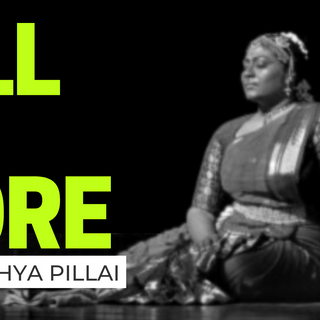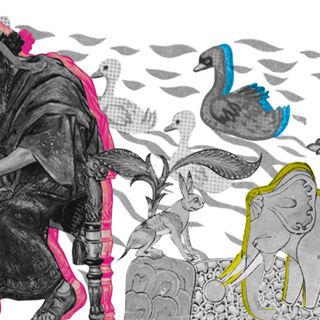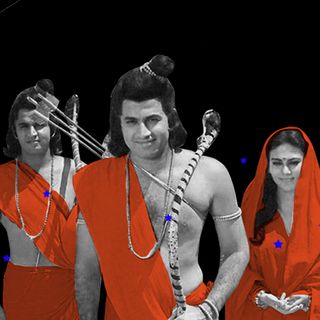
Can’t Let Go: of ‘Dill Mill Gayye,’ Despite the Drama and Toxic Relationships
‘Dill Mill Gayye,’ in Mumbai’s fictional world of Sanjivini Hospital, is a classic example of being at the right place at the right time.

In Can’t Let Go, we revisit the nostalgia around our favorite pop culture moments that haven’t aged well.
The year was 2007, when Star One debuted a medical drama that was more drama and less medicine. Dill Mill Gayye was packaged as a love story through and through — with lies, grief, betrayal, and family histories as complicated as patient charts. As was typical of soap operas, there was melodrama, unconvincing plotlines, mediocre acting, and stale dialogues. Character arcs were grievously forgotten midway; some characters were recast more than we would like. The love stories were problematic in ways more than one; sexism, casual and intended, reigned. In hindsight, people agree that it wasn’t the best television — far from it, as the show ended up perpetuating suspect ideas about modern love, women, and healthcare systems.
Nostalgia around DMG is similar to what one feels about that embarrassing family member, whom you nod and smile warily at but would prefer the distance to familiarity any day. What was once popular and appealing is now a tad cringe, redundant, and boorish in its cinematic ways.
But, there’s wisdom in not letting go of this television series just yet.
Hear me out. Yes, the show put more emphasis on the love and lives of doctors, sometimes at the expense of an accurate depiction of hospitals and health systems key to its functioning; looking back, many now found this portrayal to be lazy, insensitive, and even hurtful to the medical community. But, DMG, much like its predecessor Sanjivini, which aired between 2002 to 2005, was supposed to be a medical ‘drama.’ Sanjivini’s success was a good example to prove that anchoring the show around personal lives, rather than focusing on the nuts and bolts of health systems, was a better cinematic formula. Not only that, it was one of the earliest representations that humanized medical staff: they were ‘people’ with elaborate and even complicated love lives, and their relationships took a lot of time and energy just like it would take for you or me. Doctors and nurses, in weary scrubs and lab coats, socially inept in their ways; sleep-deprived, overworked, slugging through morbid corridors and corners — it inspired love, desire, and sex like nothing else.
Related on The Swaddle:
Feminist TV Soaps Are Finally Finding a Foothold With Mass Audience
And to be fair, there was a touch of sincerity to the show: it depicted the competition and animus between young professionals who work odd hours at the fictitious Sanjivini Hospital. These were relatable people talking about money issues, being forced to get married, dealing with conservative family ideals. The show also did a decent job of touching upon social topics particularly controversial at the time: storylines weaved in stigma around HIV-AIDs, class barriers, and adoption. Health care might not have witnessed the most nuanced, tactful portrayal — but talking about rural India’s limited access to medicine and lack of awareness around women’s hygiene on television was a small win in itself.
Since the show ended in 2010, critics have chimed in to add that it didn’t set the best example for a younger audience, who accounted for the majority of viewers. What was so scandalous, you ask? The show was one of the first in modern Indian television to flesh out relationships and sexual intimacy on-screen; it helped water down expectations of sexual purity that many Indian families are still eager to engage with. Many who lived through the DMG era recall how they had to stealthily watch the show because their parents found the content too dishonorable. But many continued to watch it nonetheless; DMG represented an innocuous act of rebellion that made for good ‘exposure’ then. The time was also just right for the audience to be receptive of the show: digital streaming and OTT platforms felt a little distant in their reach, propping these younger shows like DMG and its neighbor Miley Jab Hum Tum towards a mixed audience; there was no adult vs. kids binary.
Dr. Armaan Malik and Dr. Riddhima Gupta, whose love saga took center stage, anchored every plotline. The ‘opposites attract’ wisdom is enduring in its appeal — who doesn’t like an enemies-turned-friends-turned-lovers story arc? Of course, theirs wasn’t a perfect relationship; it was aspirational, unrealistic, even toxic. Armaan gladly took on the savior role and more than once, Riddhima was portrayed as the damsel in distress. Anyone familiar with the Hindi film industry and television shows would know that this portrayal was nothing out of the ordinary — in fact, love and relationships are still finding the right balance between dependence and individuality on screen. While DMG failed to spearhead a revolution, it folded in unassuming, existing relationships ideals. Women did take a stand — one of the doctors-in-charge was Dr. Kirti, who essayed the role of the taskmaster everyone looked up to; others had their moments, too. They weren’t feminist icons, but their presence made women’s representation a talking point, which felt enough then.
That said,watching DMG now feels tedious: the overdramatization and played-out romantic plotlines can be highly unrelatable. The background music is a sleeper hit even today — one only has to hum the show’s tune for a fellow 80s/90s kid to sigh in nostalgia. There were specific tunes to cue in sadness, romance, longing, even hope: and we would know what a particular beat would mean to the couple on screen. Remember the ‘Asmaani Rang Ho’ and ‘Ishq Leta Hai Kaise Imtehaan’ that played whenever a misty-eyed Arman looked at Ridhima? It broke hearts, and to claim otherwise would be a brazen lie.
The shootings, accidents, or memory loss in DMG are also tired artistic tropes. But what one may call ‘overdramatization’ now, inspired screenwriting that exhausted all ways of survival before calling it quits. And it worked: the show ended after a three-year run, with more than 700 episodes under its belt.
Dill Mill Gayye, inMumbai’s fictional world of Sanjivini Hospital, is a classic example of being at the right place at the right time.
Maybe that’s why we can’t let go.
Saumya Kalia is an Associate Editor at The Swaddle. Her journalism and writing explore issues of social justice, digital sub-cultures, media ecosystem, literature, and memory as they cut across socio-cultural periods. You can reach her at @Saumya_Kalia.
Related


From Aesop’s Fables to Champak Comics, What Relevance Do Morality Tales Hold Today?
